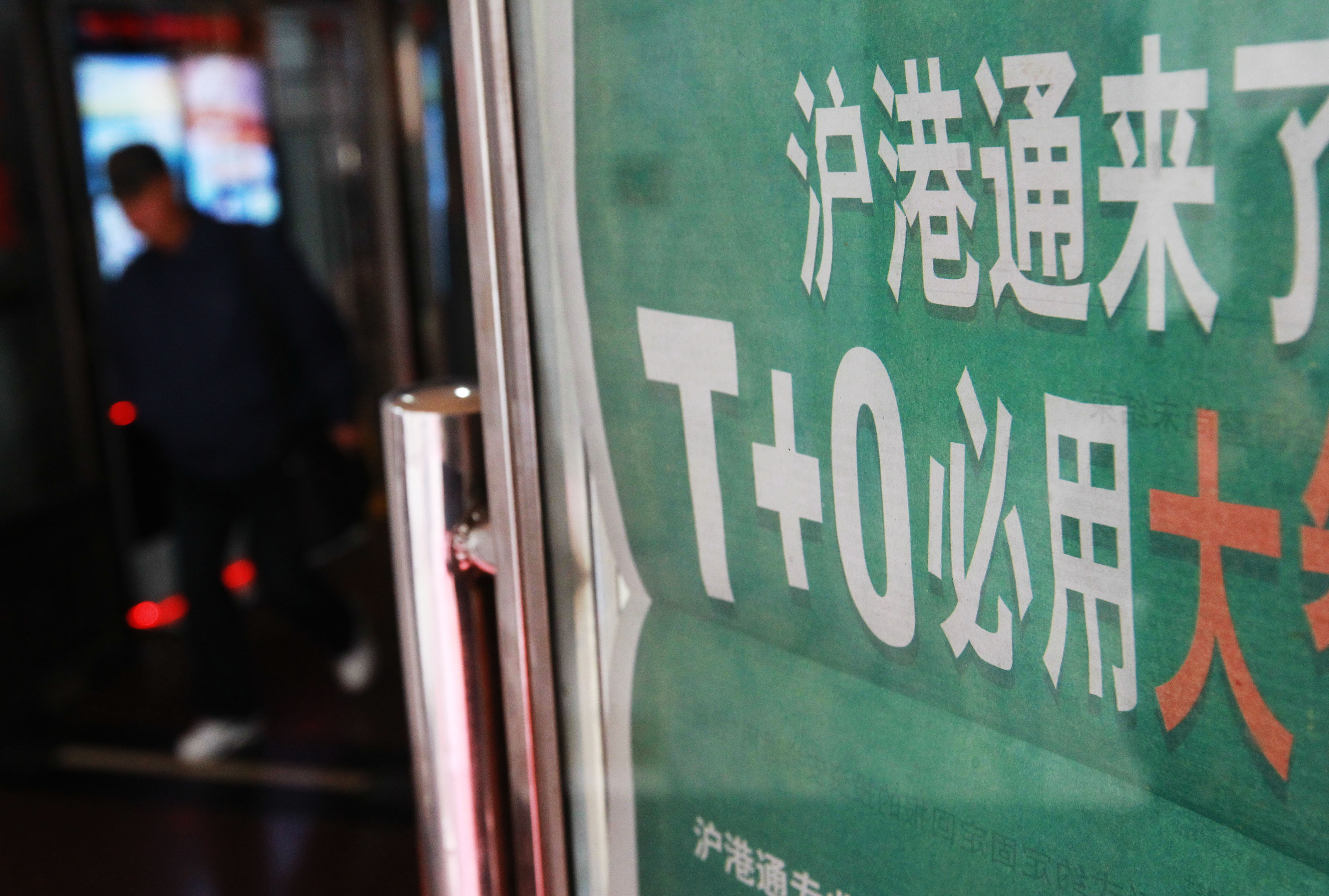
A poster about Shanghai-Hong Kong Stock Connect is seen at a securities firm in Shanghai, east China, Nov. 17, 2014. The landmark Shanghai-Hong Kong Stock Connect, which is aimed at linking up the stock exchanges of Hong Kong and Shanghai, was officially launched on Nov. 17, 2014. (Xinhua/Pei Xin)
BEIJING, Nov. 21 (Xinhua) -- This year marks the tenth anniversary of the launch of the Connect program for stock trading in the Shanghai and Hong Kong markets. Through the decade, the connectivity scheme has not only matured, with steady growth in trading volume and investor participation, but also set examples for global financial market connection in products, services and mechanism, contributing to China's high-level opening up to the world.
-- A decade of growth
The connectivity scheme has evolved significantly, expanding its product coverage, optimizing transaction settlement mechanisms, and enhancing investor participation. These developments have provided domestic and foreign investors with more convenient and efficient channels for cross-border transactions and asset allocation, injecting liquidity and vitality into both capital markets.
A great expansion in investment options has been witnessed as it grew. Taking the ETF trading as an example, since its launch in July 2022, the eligible ETF universe has grown steadily. By the end of September 2024, the number of northbound eligible ETFs had surged from 83 to 225, while southbound eligible ETFs increased from 4 to 16, covering a diverse range of indices.
Trading activities have become increasingly active with better transaction and settlement mechanisms. In the first three quarters of this year, the average daily turnover of northbound transactions of Shanghai-Hong Kong and Shenzhen-Hong Kong stock connects stood at 123.3 billion yuan (about 17.1 billion U.S. dollars), and that of southbound trading was 38.3 billion Hong Kong dollars (about 4.93 billion U.S. dollars). These figures represent increases of 21 times and 40 times, respectively, from the inaugural month in 2014, said the Hong Kong Exchanges and Clearing Limited (HKEX).
Besides, thanks to the connectivity scheme, more mainland investors have opportunities to manage cross border portfolios. By the end of September 2024, the total market value of securities held by mainland investors through the Shanghai-Hong Kong and Shenzhen-Hong Kong stock connects exceeded 3.3 trillion Hong Kong dollars, over 200 times compared to the figure of the end of 2014.
-- A push for RMB internationalization
The connectivity scheme is also of pivotal significance for the internationalization of the Renminbi (RMB) and Hong Kong's status as an offshore RMB business hub.
The Shanghai-Hong Kong and Shenzhen-Hong Kong stock connects provide investment channels for Hong Kong's investors with offshore RMB. Foreign investors trading A-shares need to settle in RMB, while mainland investors trading Hong Kong stocks, although quoted in Hong Kong dollars, also pay in RMB. In other words, all cross-border capital flows are conducted in RMB, which not only minimizes the impact on the exchange rate of the onshore RMB market but also significantly enhances the investment attributes of offshore RMB.
"From a longer-term perspective, a higher level of internationalization comes from overseas investors' wider use of the RMB in international trade and financial transactions that are unrelated to China, and long-term holding of RMB assets," said David Liao, Co-Chief Executive Officer of HSBC Asia-Pacific, citing his experience of promoting Chinese investment opportunities in the Middle East. He hoped that more Middle Eastern investors can utilize the connectivity schemes to participate in mainland stock or bond markets through Hong Kong.
In particular, to expand the use of the RMB in international investment, the HKEX officially launched new dual counter trading model in June 2023, which allows Hong Kong-listed companies to trade in both Hong Kong dollars and RMB using interchangeable tickers. A total of 24 companies in the first batch have participated in the new model, including Tencent Holdings and Alibaba.
HKEX revealed that it is actively preparing technically for the inclusion of RMB-denominated stocks under the dual counter trading model in the connectivity schemes. By then, it will further promote the circulation in the onshore and offshore RMB markets, contributing to the steady and prudent advancement of RMB internationalization.
Looking ahead, both sides will join hands to expand the scope of products, optimize the transaction mechanisms and supporting service, explore more measures to enhance investor participation and convenience and improve connectivity schemes between the two capital markets, including the Shanghai-Hong Kong and Shenzhen-Hong Kong stock connects, the Bond Connect program and Swap Connect, according to the authority.
(Edited by Li Shimeng with Xinhua Silk Road, lishimeng@xinhua.org)




 A single purchase
A single purchase









